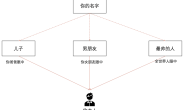首先展示实现效果,AI守门员请求出战:https://v.douyin.com/erE3dJo/
实现条件:
1.有一个ROS框架的麦克纳姆轮智能机器人(可左右横向移动的机器人);
2.能够发布摄像头信息;
3.对opencv的基本API有一定的了解。
算法思路:
1.订阅摄像头信息,用cv_bridge转换为可处理的opencv图;
2.通过opencv的颜色过滤功能,实时捕捉“足球”的位置;
3..根据足球位置和PID算法,移动机器人,使机器人始终保持在“足球”的正前方。
可结合注释阅读核心源代码(摄像头发布代码和机器人移动代码,因机器人种类的不同,不能一概而论,因此这里就谈了):
#!/usr/bin/env python
#-*- coding: utf-8 -*-
from __future__ import print_function
import sys
import rospy
import time
import cv2
from std_msgs.msg import String
from sensor_msgs.msg import Image
from cv_bridge import CvBridge, CvBridgeError
import numpy as np
from sensor_msgs.msg import CompressedImage
from geometry_msgs.msg import Twist, Vector3
class image_converter:
def __init__(self):
# 定义处理前图像订阅器
self.image_sub = rospy.Subscriber("/usb_cam/image_raw",Image,self.callback)
# 定义处理后图像发布器
self.image_pub = rospy.Publisher("/image_topic_2",Image, queue_size =3)
# 定义原图和opencv图转换器
self.bridge = CvBridge()
# 定义机器人速度控制器
self.cmdVelPublisher = rospy.Publisher('/cmd_vel', Twist, queue_size =3)
# 定义PID,其中320为视频X方向中心点。P=0.005
self.PID_controller_distance = simplePID(320, 0.005,0, 0)
def callback(self,data):
# 将原图转为opencv图
try:
frame = self.bridge.imgmsg_to_cv2(data, "bgr8")
except CvBridgeError as e:
print(e)
# 选取“足球”红色的取值范围
color_lower=np.array([0,43,46])
color_upper = np.array([10, 255, 255])
# 捕捉“足球”
frame_=cv2.GaussianBlur(frame,(5,5),0)
hsv=cv2.cvtColor(frame_,cv2.COLOR_BGR2HSV)
mask=cv2.inRange(hsv,color_lower,color_upper)
mask=cv2.erode(mask,None,iterations=2)
mask=cv2.dilate(mask,None,iterations=2)
mask=cv2.GaussianBlur(mask,(3,3),0)
cnts=cv2.findContours(mask.copy(),cv2.RETR_EXTERNAL,cv2.CHAIN_APPROX_SIMPLE)[-2]
if len(cnts)>0:
cnt = max (cnts,key=cv2.contourArea)
(color_x,color_y),color_radius=cv2.minEnclosingCircle(cnt)
if color_radius > 20:
cv2.circle(frame,(int(color_x),int(color_y)),int(color_radius),(255,0,255),2)
print(color_x,color_y,color_radius)
# 将opencv图转为原图并发布
try:
self.image_pub.publish(self.bridge.cv2_to_imgmsg(frame, "bgr8"))
except CvBridgeError as e:
print(e)
# PID控制,让小车始终保持在球的正前方
go_distance = self.PID_controller_distance.update(color_x)
# rospy.loginfo("pid_distance:{}".format(go_distance))
velocity = Twist()
velocity.linear = Vector3(0,go_distance,0)
velocity.angular= Vector3(0., 0.,0.)
self.cmdVelPublisher.publish(velocity)
# (rows,cols,channels) = frame.shape
# print(rows,cols,channels)
class simplePID:
'''very simple discrete PID controller'''
def __init__(self, target, P, I, D):
# rospy.loginfo('PID initialised with P:{}, I:{}, D:{}'.format(P,I,D))
self.Kp =np.array(P)
self.Ki =np.array(I)
self.Kd =np.array(D)
self.setPoint =np.array(target)
self.last_error=0
self.integrator = 0
self.integrator_max = float('inf')
self.timeOfLastCall = None
def update(self, current_value):
current_value=np.array(current_value)
if(self.timeOfLastCall is None):
# the PID was called for the first time. we don't know the deltaT yet
# no controll signal is applied
self.timeOfLastCall = time.clock()
return np.zeros(np.size(current_value))
error = self.setPoint - current_value
P = error
# rospy.loginfo(P)
currentTime = time.clock()
deltaT = (currentTime-self.timeOfLastCall)
# integral of the error is current error * time since last update
self.integrator = self.integrator + (error*deltaT)
I = self.integrator
# derivative is difference in error / time since last update
D = (error-self.last_error)/deltaT
self.last_error = error
self.timeOfLastCall = currentTime
# return controll signal
return self.Kp*P + self.Ki*I + self.Kd*D
if __name__ == '__main__':
rospy.init_node('image_converter', anonymous=True)
ic = image_converter()
print('start')
try:
rospy.spin()
except rospy.ROSInterruptException:
print('exception')



